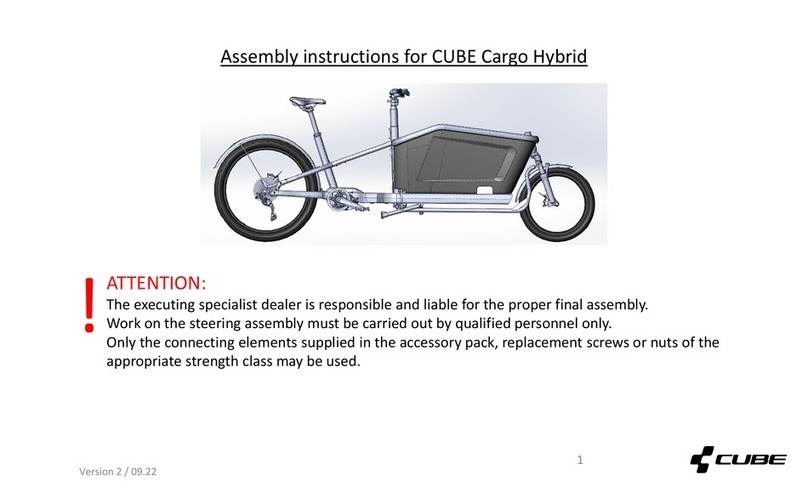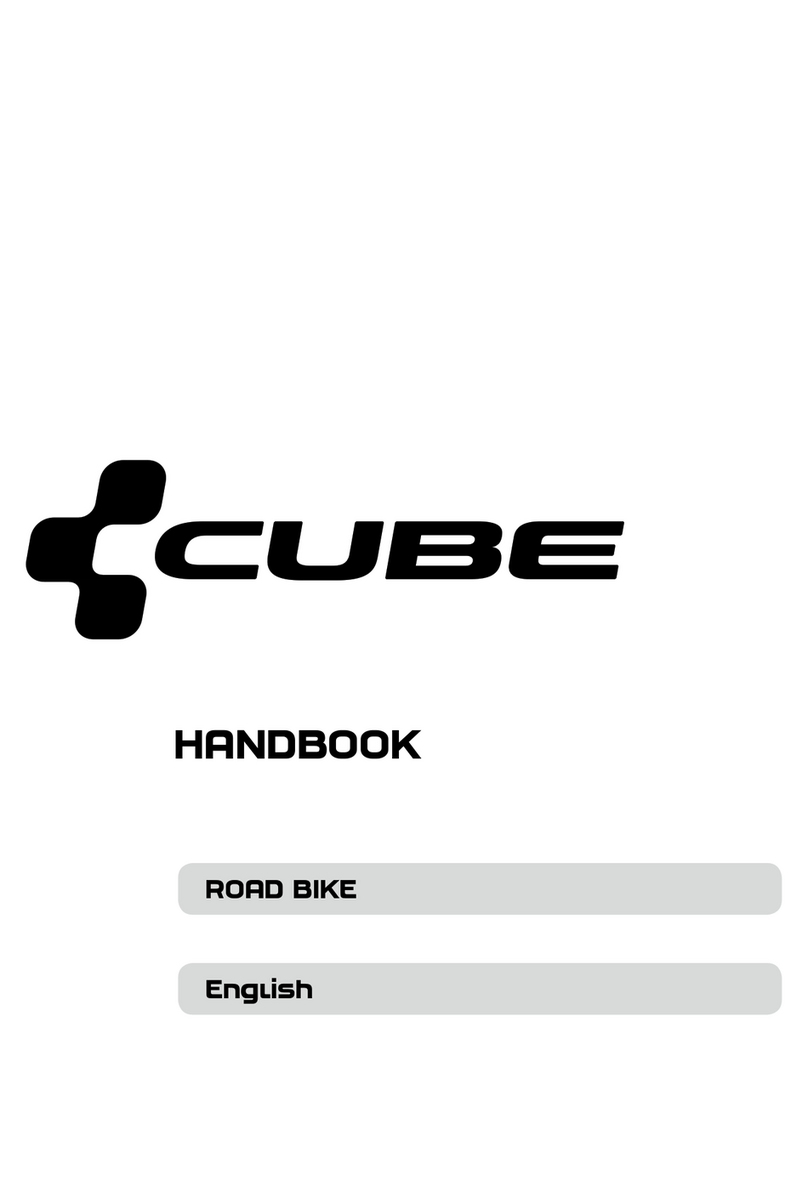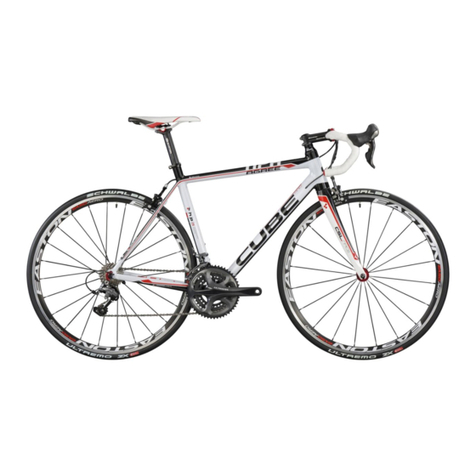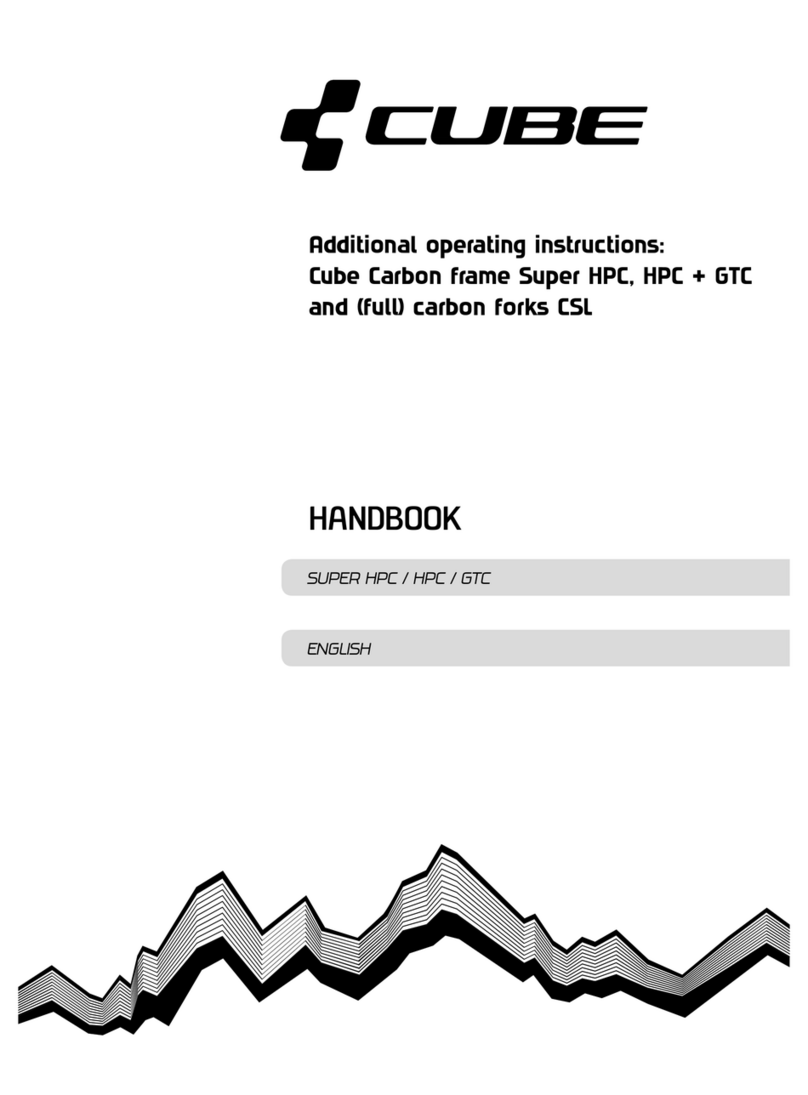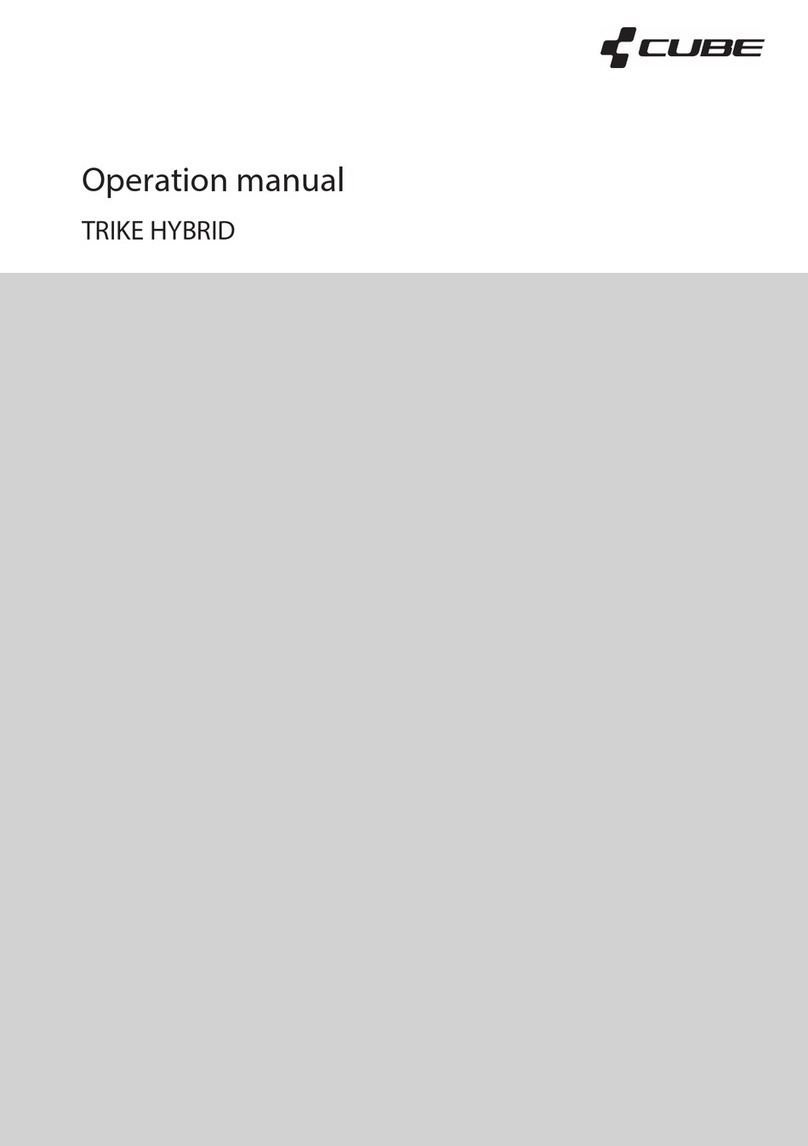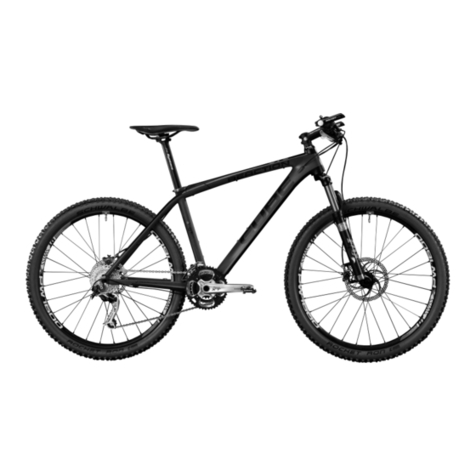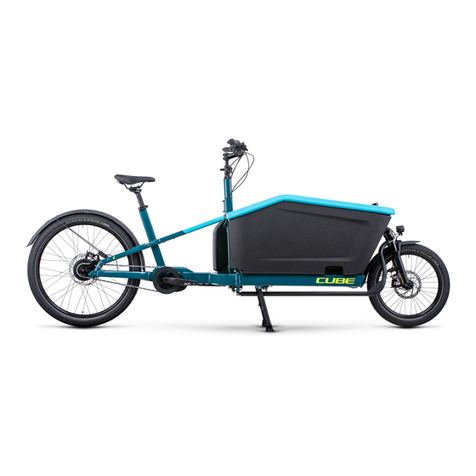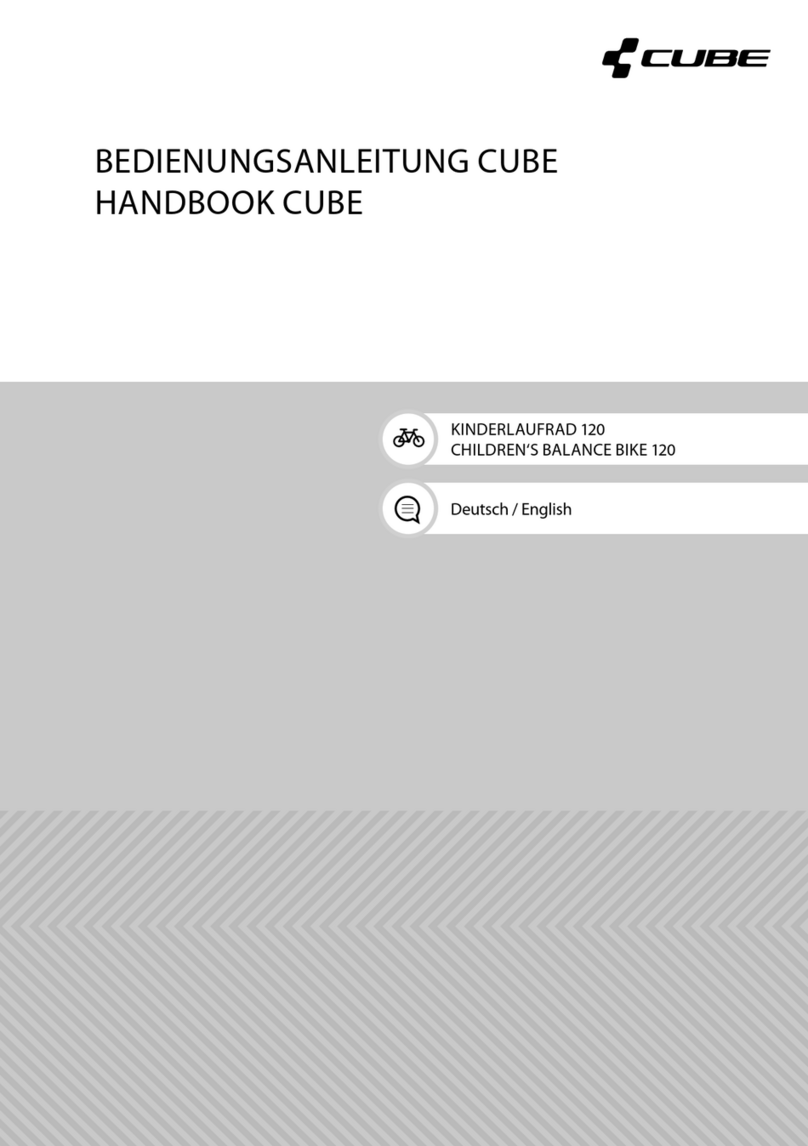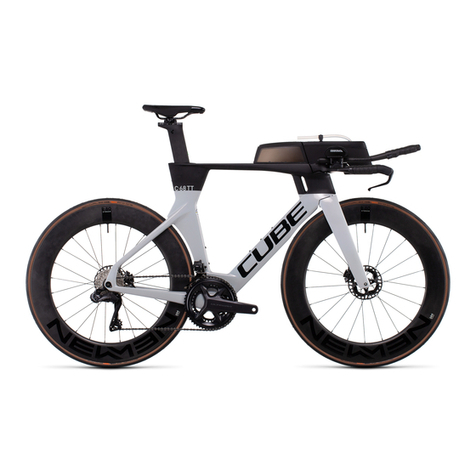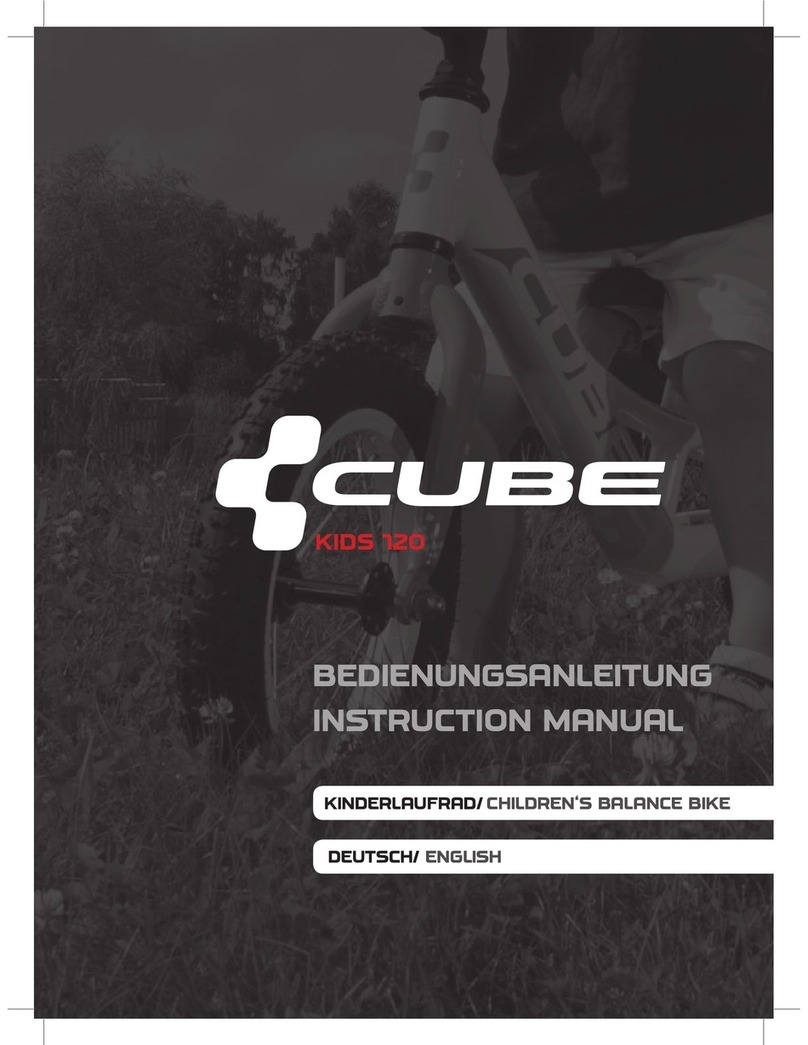KIDS BMX |EN |3
6.8.2 Check rim brakes and cable (mountain bike version).................................................................................................................................20
6.8.3 Check hydraulic rim brakes................................................................................................................................................................................................. 21
6.8.4 Check hydraulic disk brakes..............................................................................................................................................................................................22
6.8.5 Check back-pedal brake.......................................................................................................................................................................................................22
6.9 Check crankset and chain....................................................................................................................................................................................................23
6.10 Check lighting system (if fitted)......................................................................................................................................................................................23
6.11 Check carrier....................................................................................................................................................................................................................................23
6.12 Check splash guards (mudguards)................................................................................................................................................................................23
6.13 Check BMX mounting parts.................................................................................................................................................................................................24
6.14 Other checks....................................................................................................................................................................................................................................24
7Adjusting and Using your bike..........................................................................................................................................................................................24
7.1 Adjusting the adjustable stem (optional) ...............................................................................................................................................................24
7.2 Adjust saddle position.............................................................................................................................................................................................................24
7.3 Adjust saddle height.................................................................................................................................................................................................................25
7.4 Adjust suspension fork...........................................................................................................................................................................................................25
7.5 Adjust rear suspension...........................................................................................................................................................................................................26
7.6 Using the gears.............................................................................................................................................................................................................................26
7.6.1 Shimano Dual Control..............................................................................................................................................................................................................27
7.6.2 Shimano Rapidfire/ Shimano Rapidfire 2-Way-Release/Shimano EZ Fire...................................................................................28
7.6.3 SRAM gear shift ............................................................................................................................................................................................................................29
7.6.4 Twist grip shift................................................................................................................................................................................................................................29
7.7 Using the brakes...........................................................................................................................................................................................................................30
7.8 Operate the quick-release action................................................................................................................................................................................. 31
7.9 Using click-in pedals (optional)......................................................................................................................................................................................33
7.10 Loading the carrier......................................................................................................................................................................................................................35
8During riding.......................................................................................................................................................................................................................................36
8.1 Troubleshooting.............................................................................................................................................................................................................................36
8.1.1 Gears and crankset...................................................................................................................................................................................................................36
8.1.2 Brakes.................................................................................................................................................................................................................................................... 37
8.1.3 Frame and suspension ........................................................................................................................................................................................................... 38
8.1.4 Splash guard, carrier and lighting................................................................................................................................................................................ 38
8.1.5 Wheels and tyres........................................................................................................................................................................................................................39
9After falls or accidents........................................................................................................................................................................................................40
10 Transporting your bike............................................................................................................................................................................................................40
10.1 Fit and remove wheels............................................................................................................................................................................................................41
10.2 Remove and replace seat post and saddle.......................................................................................................................................................45
11 Cleaning and caring for your bike................................................................................................................................................................................47
12 Storing your bike for a lengthy period ...................................................................................................................................................................50
13 Guarantee and Warranty........................................................................................................................................................................................................50
